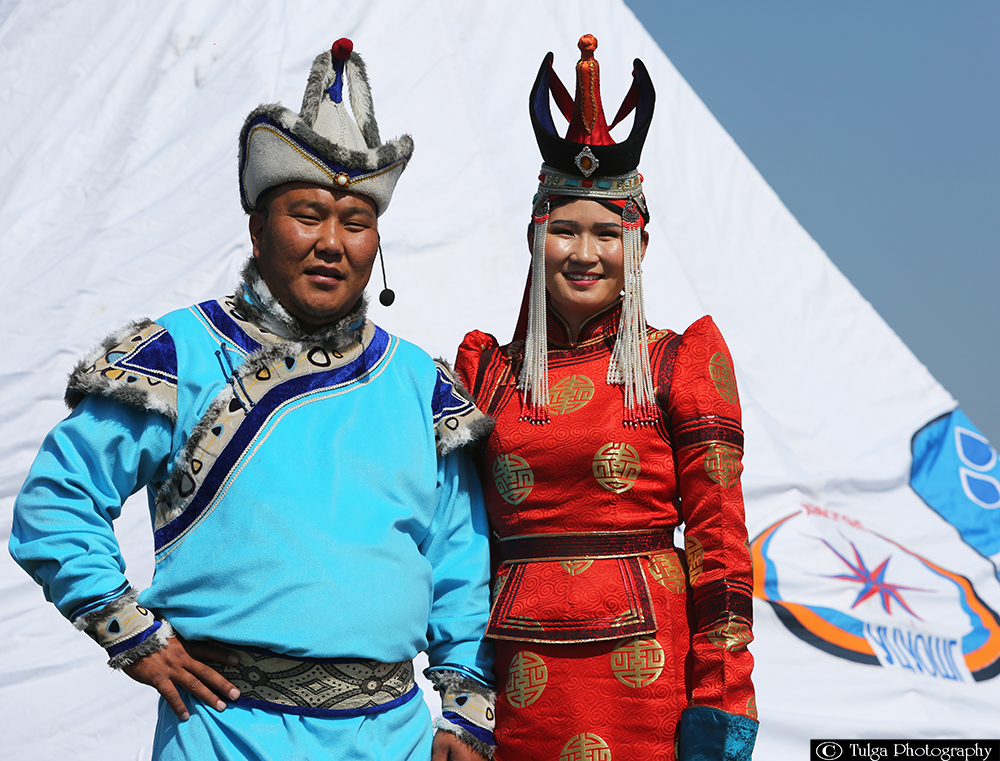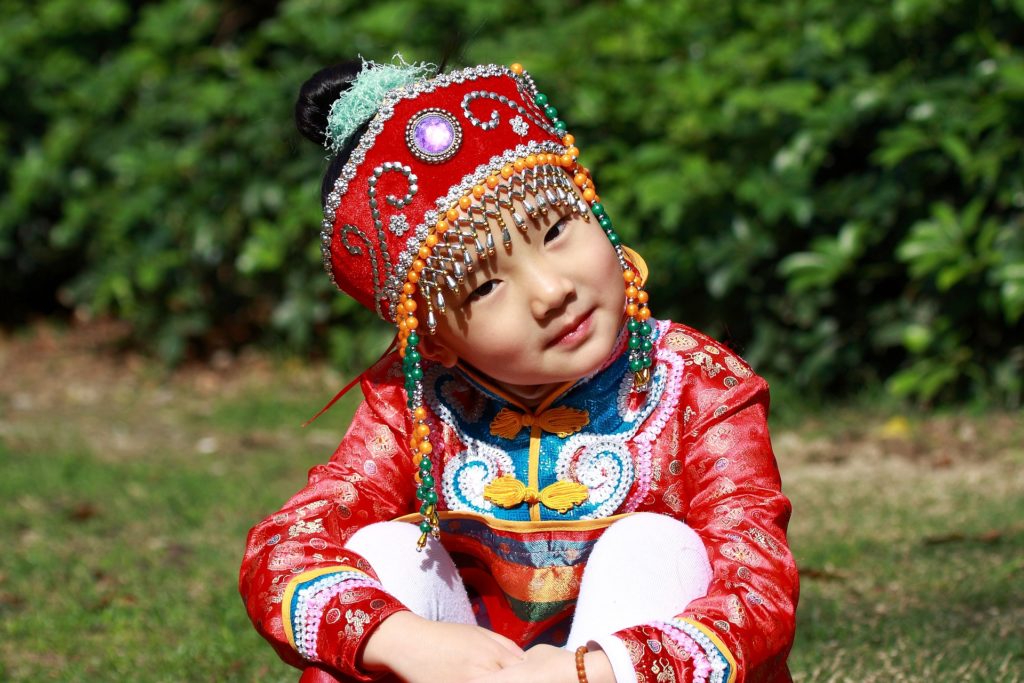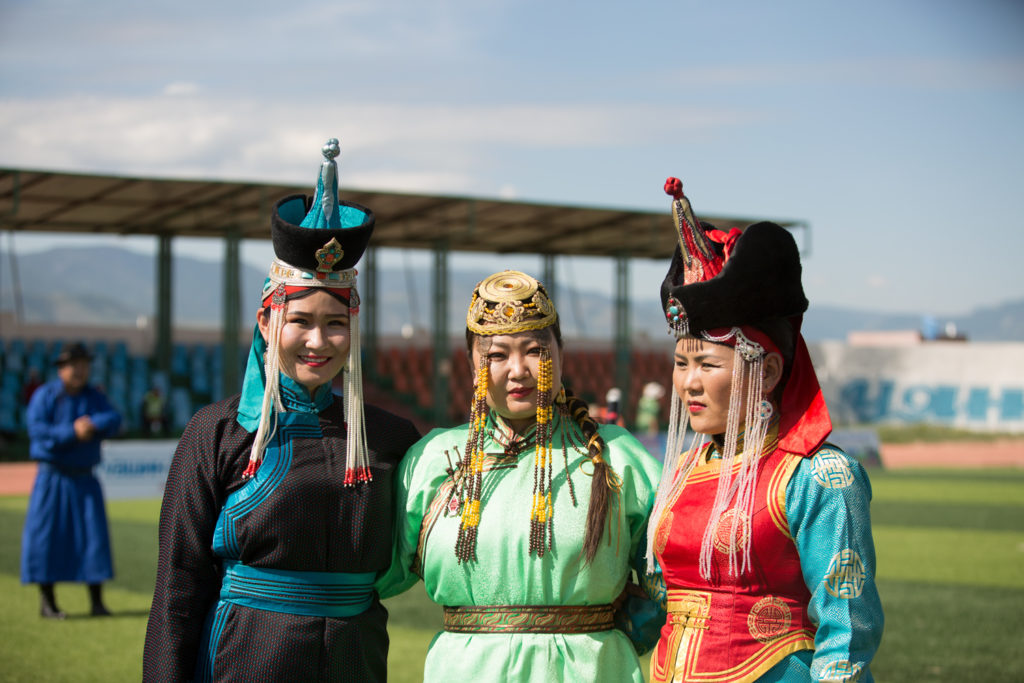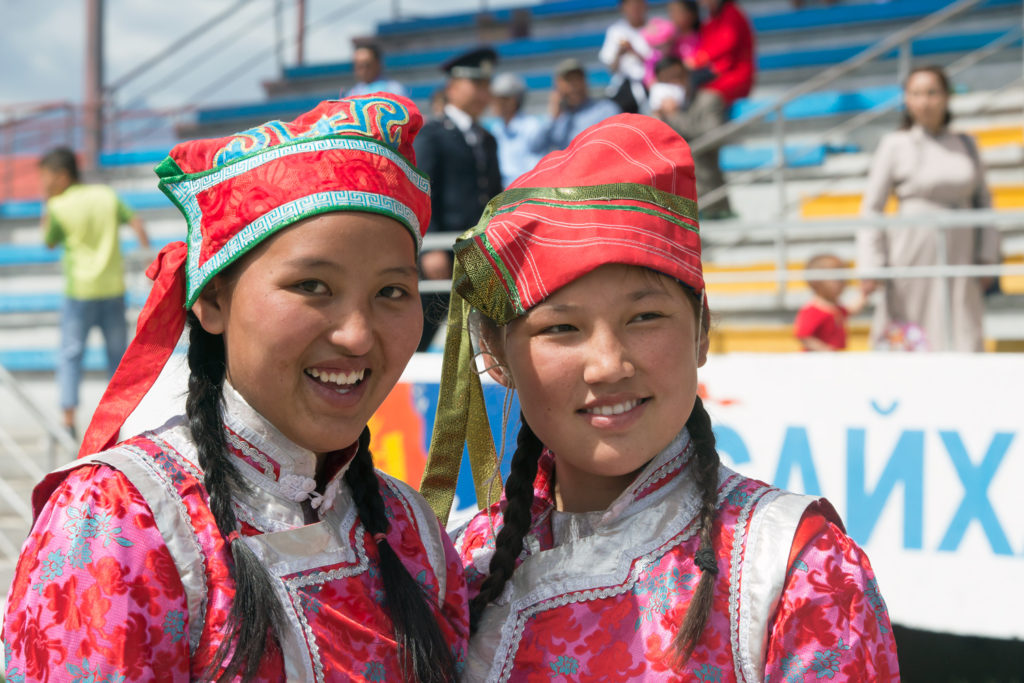If you’ve ever wondered how people use to survive the thrilling cold of -40C in the yurt, Mongolians have it figured out. In the herding community, hours of horseback riding and going out in the random hours at night during freezing cold winter is common. In order to be as comfortable as possible while being warm and have no restriction in the movement, Mongolians wear ‘deel’- traditional clothing.
Do Mongolians wear Deel now?

It has not been long since the modern clothing of jeans and shirts have penetrated into the Mongolian fashion industry. Even though it has become unusual to see a person wearing a deel on a normal day in the city, Mongolians used to wear deel on almost every occasion.
Be it a wedding, normal day of herding, or celebration of a national holiday- Tsagaan Sar, people would wear deel, only a cleaner and nicer one. Even the school uniform used to be deel with a red ribbon tied around the neck during a socialist era.
The proof that only about two or three generations have passed since we have started wearing modern clothing is that there are still elders who haven’t worn a single piece of modern clothing in their life.
What exactly is a ‘Deel’?
Mongolian deel is a long tunic that can be worn by men and women in four seasons, varying in material and style depending on the weather and occasion. During summer, Mongolians wear simple cotton and wear a heavier one padded with sheepskin or fur during winter.
There are two main types of deel- a ‘terleg’ which is a light and simple one usually made with basic cotton, a ‘hantaaz’ which is a jacket that can be worn on a deel for extra warmth and sometimes for fashion purposes.
Design and various kinds of a Deel
The cut and design of the deel are pretty much the same for men, women, and children only varying in size. One thing that personalizes deel is the sash or a belt.
Usually, it’s a long fabric about three to four meters long, but people wear leather one with embroidery or metallic ones sometimes. It is said that a belt’s length should be enough to circle an owner three times. Men tie it around their torso and pull out some fabric to create a more heavily built look while women use the belt to show more of their body figure by tying it tightly.
Different styles of Deel
There are two kinds of collars in the deel. One is a high collar that goes up to the chin and has a button that is usually left unbuttoned. This type of collar is more common in Mongolia.

The second one is called the “Hun collar” because the shape of it is believed to have come down from that era. The button and collar go straight down to the armpit and has a wider lining. However, because of the way it was worn commonly by the monks, the style was banned during the socialist era.
Things you don’t know about Deel
Mongolian deel has faced several changes in material and look, but the main cut has not been tremendously changed. Since the deel should be suitable to be worn during herding work and should be warm enough for the winter, the style is simple yet efficient. It’s basically a long gown with a wide flap that can be folded in the chest area, long sleeves, a high collar, and buttons on the right side of the body.
Origins of a Deel
The first form of Mongolian deel can be found during the Hun era, a long tunic made with leather or animal skin. Around that time, in the 6th to 13th century, the Turkic had a similar gown as deel which was worn in the opposite direction. That’s why some countries in central Asia have traditional clothing similar to deel.
How is Deel made?
With no or little access to the professional tailor, Mongolians used to make the deel by themselves. Whenever a child gets a new deel done, he goes around the neighborhood and people give a treat to the children wishing them a long life with a saying “Ed ni khevreg, ezen ni munch” meaning the owner of the clothes should outlive and make good use of the deel.
Every woman learns how to make Deel from a young age, including the buttons. Even though Mongolians had access to buttons made with precious stones or metals, the deel for daily life were usually handmade with a cloth.
Accessories and decorations of a deel
Also, the decorative linings around the collar and cuffs are handmade with silk and fur that goes with the color of the deel. Even though the color doesn’t specifically mean anything, Mongolians tend to go for the brighter color, especially if it’s prepared for the celebrations.

Since the style of the deel is usual, the material and pieces of jewelry were what made the difference for the special occasions. The deel for the celebrations is usually made with colorful silk with patterns and precious stone buttons.
Traditional jackets
Women wear ‘Uuj’ which is an extra layer of deel with no sleeves and men wear Khantaaz- a shorter traditional jacket. Those layering clothes usually have a color that goes with the deel and usually is elaborately embroidered and sometimes lined with precious furs. Belts can serve as an accessory not only by themselves but also by carrying pieces of jewelry for women, purses for knives for men.
Why do Mongolians love their deel so much?
Deel is probably the most practical clothing for the herders since while serving as a basic garment; it can also work as a blanket, tent, and comforter. It is common for the herders to spend a night or two out in nature, so wearing a deel saves them the trouble of carrying an extra blanket.

Also, the long sleeves with ‘Nudarga’ can be used as mittens during the winter since the winter deel is usually padded with sheepskin to keep the warmth.
The long robe that can be tied around in the waist doesn’t restrict the movement which is essential during the hours of horseback riding and other herding chores. During winter, deel keeps the owner warm while in the warmer seasons it protects the owner from mosquitoes and the sun.
Deel’s use in the present
Even though most of the people outside the city wear deel in their daily life, it is unusual for the residents of the city to wear it daily. Except for some elders, Mongolians wear pretty normal and stylish clothes.
A basic t-shirt and jeans are a go-to for most people and deel are only worn on national holidays such as Tsagaan Sar, Naadam or on special occasions like weddings and graduation. That deel is made with silk and had a unique style to make them look more festive.
However, in the last five years, the use of deel has become much more common for the youth thanks to the emerging streetwear brands. Nowadays, the deel has become more like a fashion statement for the youth.
You can spot them at music festivals, underground film openings, or a hippy bar paired with combat boots and hoop earrings. The clothing brands and youth are trying to keep our tradition by pairing the traditional pattern and cut with modern clothing.
With a more minimalistic look and different but simple cuts, deel is evidently making a comeback to the Mongolian fashion industry. For more mature age groups, wool and silk deel can serve as an elegant gown for the holidays.
